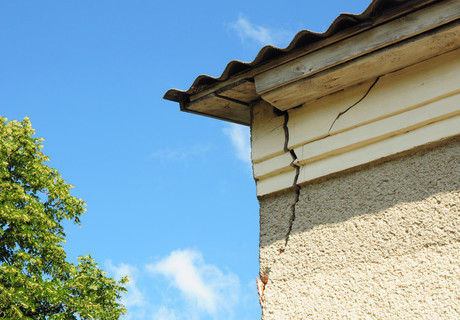Identifying dangerous structural issues in buildings

Unstable ground can lead to structural issues with a building, affecting worker safety and business operations.
Some of the signs of unstable ground include sloping and sinking floors, and cracks in transport yard pavements and driveways.
The stability of foundations beneath a manufacturing or warehouse facility, including the loading dock, transport hub and driveway, can have a significant impact on workplace health and safety practices, as well as business operations and performance.
James O’Grady, a ground engineering specialist at Mainmark, says it’s important for business owners to identify the signs of structural issues early, and act quickly to rectify those that have the potential to cause injury or disrupt the business. Common signs are as follows:
- Sinking or sloping floors create trip and fall hazards, and affect the stability of walkways, gantries, elevated work platforms and ladders frequently used by workers to access machinery and equipment for routine tasks, maintenance, servicing, repair or cleaning.
- Cracked or uneven floors, sinking concrete slabs, sloping floors or shelving that has become unlevel can affect the safety of workers and the efficient operation of mobile machinery and equipment. These are likely to be a sign that the foundation ground underneath the building needs reinforcement to support the weight of heavy machinery and other loads.
- Uneven floors directly impact the performance of machinery, tools, and workplace health and safety. A level floor is crucial to the stability of shelving and racks affecting workflow, and the safe operation of forklifts, pallet jacks, cranes and delivery trucks. An uneven floor can reduce the efficient operation of large machinery and equipment with moving parts, such as booms or mechanical appendages.
- Heavy industrial equipment can put floors and their underlying foundations under immense stress, and cause cracking or sinking. Facilities with busy transport hubs will rely on frequent and seamless access of heavy vehicles as part of daily operations.
Manufacturing facilities and warehouses are environments that require a vigilant approach to workplace health and safety, with manufacturing identified in the Australian Work Health and Safety Strategy 2012–2022 as a priority industry.
“Mainmark was recently called to a busy transport yard where ‘pumping’ at the slab joint had caused voids to form under the concrete pavements, which resulted in the slab moving every time a vehicle drove over it,” said O’Grady.
Pumping is the movement of base, subbase and/or subgrade material as a result of water pressure beneath the slab. As heavy traffic loads continually pump the saturated foundation ground, the materials that provide structural support to the slab move, which can exacerbate underlying issues or voids, leading to increased subsidence, damage and the risk of failure.
“Over time, the voiding increased until the slab lost support and cracked. Not only was this unsightly, it also caused issues with forklifts and other traffic in the area,” said O’Grady.
Subsidence of external slabs and pavements typically results in run-off water ponding and then seeping into the foundation ground. As heavy traffic loads pump the saturated foundation ground, it may exacerbate underlying issues or voids beneath foundations, leading to even more damage, increased subsidence and the risk of failure.
“While the cost to repair structural issues may seem prohibitive, the cost of a serious workplace incident can be significant, not to mention the personal cost to an injured person and their family,” said O’Grady.
Successful remediation of structural issues and uneven floors is possible outside of key operational hours, and with minimal disruption or mess. Mainmark’s Teretek resin injection solution can be used to fill voids, relevel buildings and remediate ground issues to strengthen a building’s foundations quickly and unobtrusively.
Suitable for most soil types, the Teretek expanding resin is applied via small injection points into the ground beneath the structure, strengthening the ground and compacting the soil. Teretek can be applied in situ under existing structures, avoiding the expense of excavation or replacing concrete.
The process is very quick: many relevelling and slab-lifting jobs take less than a day, and concrete driveways and slabs can often be driven on within hours of completion.
What a psychologically safe workplace looks like
A personal account from a remote mining site shows how a psychologically safe workplace...
Contract labour in mining: do savings outweigh safety outcomes?
Australian researchers have analysed decades of research on contract labour in mining, arguing...
Psychosocial risk management: eight trends with tips
Psychosocial risk management has become a central pillar of workplace safety and organisational...









